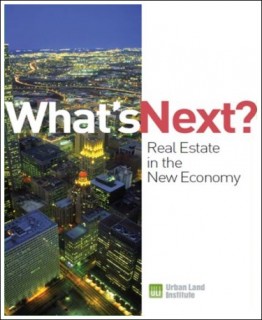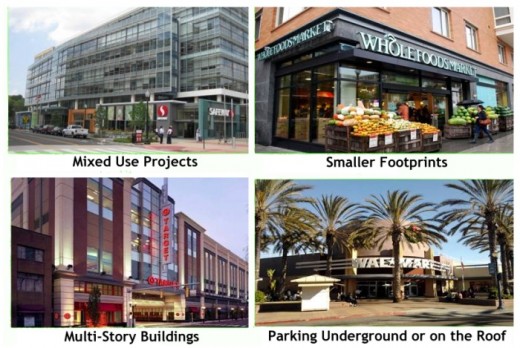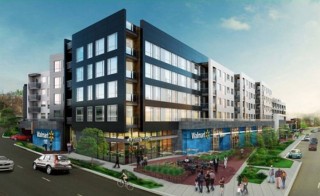
Urban Land Institute planning and land use analyst Ed McMahon (officially ULI’s “Senior Fellow for Sustainable Development”), provided a riveting talk at the Northern New England APA Conference in Brunswick, Maine.
McMahon’s focus: changing trends in economic development, and how they are affecting the shape of our communities. In other words, what’s the market telling us planners and planning commissioners?
But first McMahon acknowledged the pressures that planners are facing from some who discount the value of community planning or view it as a scheme to destroy property rights. His response:
“Who would invest in a corporation if it didn’t have a business plan? … the same is true for a community if it doesn’t have a plan. Every successful institution, whether a corporation or a community, needs to plan.”
A Changing Model of Economic Development

The evidence, McMahon said, shows a major shift in economic development and retail — a shift fostered by changing demographics. The “20th century model of economic development,” McMahon explained, “focused on the ‘one big thing’ … that is, mega projects like convention centers, giant ‘festival marketplaces,’ and similar large-scale proposals.”
Investors and real estate analysts, however, have realized that “the one big thing rarely works.” Instead, they’re understanding that “you need lots of little things that work together synergistically.” To McMahon, that’s the 21st century model of economic development, “communities getting stronger one building at a time.”
The single most single most important factor today, McMahon said, is having a highly educated population. “College grads are clustering in certain cities and regions,” and we’re starting to understand that “the most important infrastructure today is not roads, it’s education.”
What’s more, the U.S. is still growing, “and will increase by 100 million by 2050.” But, as McMahon emphasized, the shape of our households is changing dramatically, with an increasing number of female-led households. [Editor’s note: you may also recall the flurry of news stories this Spring about Census data indicating that for the first time less than 50% of households were led my married couples; for additional details from the Census Bureau – pdf file].
The Economics of Uniqueness
McMahon also raised an interesting concept — which he termed “the economics of uniqueness.” More and more people and businesses, he noted, are seeing that “sameness is not a plus, it’s a minus.” “If there’s one thing you should remember from what I say today,” McMahon added, “it’s that the image of a community is fundamentally important to its economic well-being.”
Interestingly enough, as McMahon continued, the marketplace is catching up to some of the things planners have been promoting for years: strong downtowns; walkable and bikeable communities; abundant green space; and the value of high quality design. Smiling broadly, he noted that “even the National Association of Homebuilders now says that the place is becoming more important than the product.”
“They’re seeing that walkability is creating a premium in the marketplace.”
They’re realizing that people value living near open space, so that “today we’re essentially building golf courses without the golf course.”
Taking Advantage of Market Trends
So how do communities take advantage of these trends?
“The first thing to do is figure out where NOT to build,” McMahon stressed. That’s key to preserving open space and natural areas. Moreover, “as you grow your community, you need to green it,” he added.
“Ensuring high quality design” is also critical. On this point, McMahon made note of ULI’s recent publication, “Urban Design & the Bottom Line.”
Finally, McMahon argued that strong downtowns are vital to a healthy economy. Strip malls, he noted, have reached the end of the line, at least in their current form. “We now have one billion square feet of vacant retail in America, and most of this is on strips.”

Instead, retailers are seeing that “in downtowns, people stay longer and spend more.” They’re recognizing, he added, that young adults — Gen Y — as well as baby boomers, singles, and others want to walk more, drive less, and live in the vibrant core of their community.

What’s more, McMahon said, retailers are unveiling designs that would have been unthinkable just a decade ago.
McMahon pointed to a slide of what could be the new model for Wal-Marts built in urban areas. “Believe it or not,” he said, “there will soon be Wal-Marts with apartments upstairs.”
Now that’s a head-spinning thought to end with.